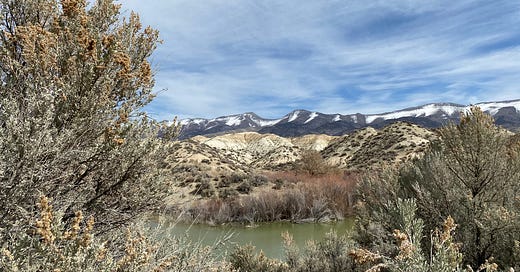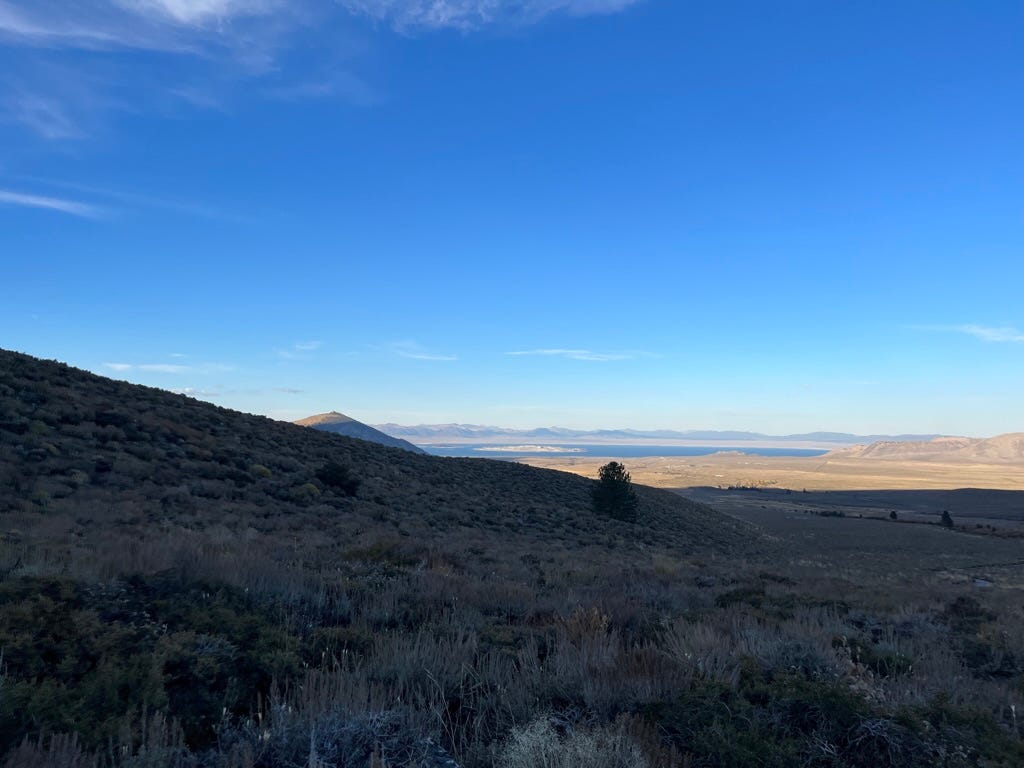More rights than water. More rights than water.
It’s a problem across the West. How to reconcile historical over-allocation of water with present supply? It’s a problem that climate change has made harder. And it’s a problem where the primary tool that the law affords regulators (curtailment using the prior appropriation system) is full of legal question marks, and produces high conflict. It’s not the route regulators typically want to go, and so problems have often worsened.
That’s why there was an important piece of news out of Nevada this month, where the governor approved two pieces of legislation that made permanent a pilot water rights retirement program that has seen a lot of interest over the past few years. The idea is that irrigators could voluntarily sell their water rights through the program to:
“(a) Protect the natural resources of this State;
(b) Address declining levels of groundwater; or
(c) Address conflicts with existing rights or with protectable interests in existing domestic wells.”
Source: SB36, as adopted.
All this with the overall goal of decreasing the amount of water used in aquifers where groundwater over-extraction has resulted in undesired consequences: falling water tables, land subsidence, spring depletion and streamflow loss. There are many places where this is occurring or where there’s a big potential of this occurring in the future.
The major question is how to fund it all, as the Las Vegas Review-Journal’s Alan Halaly reported: “The law creates a state account solely for the purpose of purchasing and retiring water rights, and permits the collection of private and public donations. Meny, the governor’s spokesman, pointed to future legislative appropriations, federal grants and public-private partnerships as potential sources of funding.”
There are some important considerations with programs like this — how do you prevent retired groundwater from being re-appropriated and used by someone else? The legislation offers safeguards for that: “Any decreed or certificated groundwater right that has been retired pursuant to this section is not available for any use and shall be deemed to be retired in the source in perpetuity.”
And there are some larger governance questions, too. State regulators across the West, in conjunction with federal laws that encouraged development, appropriated more rights to use groundwater than there was to go around sustainably. What are states’ fiscal and regulatory roles in fixing this problem? What terms are fair and equitable?
Lots more to write on it…
For now, a little more reading on this here:
The Nevada Independent on the two bills back in April
Nature Conservancy press release showing range of support for the program.
Largest “land back” deal on the Klamath
From the L.A. Times’ Ian James:
Along the Klamath River in Northern California, where logging companies once cut ancient redwood trees, vast tracts of land have been returned to the Yurok Tribe in a years-long effort that tribal leaders say will enable the restoration of forests and the protection of a watershed that is vital for salmon.
The effort, which unfolded gradually over the last 23 years, culminated in May as Western Rivers Conservancy turned over 14,968 acres to the Yurok Tribe. It was the last portion of 47,097 acres that the nonprofit group acquired and transferred to the tribe in what is thought to be the largest “land back” deal in California history.
Members of the tribe say they are celebrating the return of their ancestral lands along Blue Creek, a major tributary that meets the Klamath about 40 miles south of the Oregon border. Blue Creek holds cultural and spiritual significance for the Yurok, and its cold, clear waters provide a refuge for salmon.
“We are salmon people,” said Joseph L. James, chairman of the Yurok Tribe. “The river takes care of us, and it’s our job to take care of the river.”
Another excellent Klamath recovery story by The Guardian’s Gabrielle Canon who looks at the role of recreation: “As the flows were released and the river found its way back to itself, a new chapter of recovery – complete with new challenges – emerged.”
For those interested in the Public Trust Doctrine
Have not read this one yet since it came across my radar but it looks excellent for anyone who is interested in the history of the Public Trust Doctrine. A new piece in the UC Davis Law Review on the the California Supreme Court’s landmark Mono Lake ruling in the 1983 (National Audubon Society v. Superior Court), focusing on what led to the litigation and the aftermath. The article is excerpted from a new book, and I’m really looking forward to sitting down and reading the paper soon. Here is a snippet:
“The Mono Lake case will turn fifty in the coming decade. After all these years, the Mono Lake story still prompts reflection about the way the public trust doctrine navigates complex conflicts between public and private rights in natural resource commons, from ancient protections for waterways to contested modern claims for atmospheric resources. Nevertheless, while the decision itself is well represented in the legal literature, the full story of the case has not received the attention it deserves. This Article offers fresh perspective on the least recounted but critical parts of the story — not only the significance of the legal innovations in the decision, but also what happened beforehand to lay the foundations for the landmark ruling, and then what happened afterward to bridge the court’s holding to the ultimate outcome for Mono Lake.”
That’s it for now. As always, thanks for reading! You can support this newsletter and my writing by sharing it with colleagues and collaborators. Or subscribing!
Cheers,
Daniel






